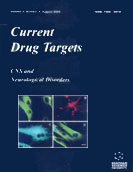Abstract
ATP is a potent signaling molecule abundantly present in the CNS. It elicits a wide array of physiological effects and is regarded as the phylogenetically most ancient epigenetic factor playing crucial biological roles in several different tissues. These can range from neurotransmission, smooth muscle contraction, chemosensory signaling, secretion and vasodilatation, to more complex phenomena such as immune responses, pain, male reproduction, fertilization and embryonic development. ATP is released into the extracellular space either exocytotically or from damaged and dying cells. It is often co-released with other neurotransmitters and it can interact with growth factors at both receptor- and / or signal transduction-level. Once in the extracellular environment, ATP binds to specific receptors termed P2. Based on pharmacological profiles, on selectivity of coupling to second-messenger pathways and on molecular cloning, two main subclasses with multiple subtypes have been distinguished. They are P2X, i.e. fast cation-selective receptor channels (Na+, K+, Ca2+), possessing low affinity for ATP and responsible for fast excitatory neurotransmission, and P2Y, i.e. slow G protein-coupled metabotropic receptors, possessing higher affinity for the ligand. In the nervous system, they are broadly expressed in both neurons and glial cells and can mediate dual effects: short-term such as neurotransmission, and long-term such as trophic actions. Since massive extracellular release of ATP often occurs after metabolic stress, brain ischemia and trauma, purinergic mechanisms are also correlated to and involved in the etiopathology of many neurodegenerative conditions. Furthermore, extracellular ATP per se is toxic for primary neuronal dissociated and organotypic CNS cultures from cortex, striatum and cerebellum and P2 receptors can mediate and aggravate hypoxic signaling in many CNS neurons. Conversely, several P2 receptor antagonists abolish the cell death fate of primary neuronal cultures exposed to excessive glutamate, serum / potassium deprivation, hypoglycemia and chemical hypoxia. In parallel with these detrimental effects, also trophic functions have been extensively described for extracellular purines (both for neuronal and non-neuronal cells), but these might either aggravate or ameliorate the normal cellular conditions. In summary, extracellular ATP plays a very complex role not only in the repair, remodeling and survival occurring in the nervous system, but even in cell death and this can occur either after normal developmental conditions, after injury, or acute and chronic diseases.
Keywords: Neurodegeneration, phylogenetically, hypoglycemia, purinergic, etiopathology
 5
5

















